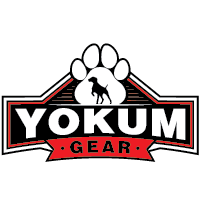Understanding Reactivity in Dogs
Reactivity in dogs refers to an exaggerated response to specific stimuli, such as other dogs, people, or various environmental factors. This behavior can manifest as barking, lunging, growling, or even snapping. Reactive dogs often find it challenging to focus and may seem overly anxious or aggressive. Understanding the root causes and implementing effective training strategies can help manage and reduce reactivity, leading to a calmer and more confident dog.
Identify Triggers
Understanding what triggers your dog’s reactive behavior is the first step in effective training. Common triggers include unfamiliar people, other dogs, vehicles, or loud noises. Observe your dog's behavior closely to identify specific triggers and note the intensity of their reaction. This information will be vital in creating a tailored training plan.
Implement Desensitization Techniques
Desensitization involves gradually exposing your dog to the trigger at a controlled intensity, allowing them to remain calm and relaxed. Start at a distance where your dog can notice the trigger but does not react. Reward your dog for staying calm, and gradually decrease the distance over time. This technique helps your dog associate the trigger with positive experiences, reducing their reactive response.
Use Counter-Conditioning
Counter-conditioning is a technique used to change your dog's emotional response to a trigger. Pair the presence of the trigger with something your dog loves, such as treats or toys. For example, if your dog reacts to other dogs, give them a treat each time another dog appears, eventually teaching them to associate other dogs with positive outcomes rather than fear or aggression.
Teach Alternative Behaviors
Training your dog to perform an alternative behavior when exposed to a trigger can be highly effective. Commands such as sit, stay, or focus can redirect your dog’s attention away from the trigger. Consistently practice these commands in a calm environment before gradually introducing the trigger.
Maintain a Consistent Routine
Consistency is key in training reactive dogs. Establish a predictable routine for walks, feeding, and playtime to help your dog feel secure and reduce anxiety. Regularly practice training exercises and reinforce positive behaviors with rewards.
Utilize Professional Help
If your dog's reactivity is severe, seeking the assistance of a professional dog trainer or behaviorist may be necessary. These experts can provide personalized training plans and advanced techniques tailored to your dog's specific needs. Positive reinforcement and reward-based training methods are recommended for maintaining your dog's welfare.
Exercise and Mental Stimulation
A well-exercised dog is less likely to exhibit reactive behaviors. Ensure your dog gets adequate physical exercise to burn off excess energy. Mental stimulation, through interactive toys and puzzle games, can also help keep your dog engaged and less focused on their triggers.
Stay Calm and Patient
Your dog can pick up on your emotions, so remaining calm and patient during training is crucial. Reacting with frustration or anger can exacerbate your dog's reactivity. Celebrate small victories and understand that progress may take time but is achievable with consistent effort and positive reinforcement.
Conclusion
Managing and reducing reactivity in dogs requires patience, consistency, and a solid understanding of your dog's triggers and behaviors. With the right training techniques, including desensitization, counter-conditioning, and teaching alternative behaviors, you can help your dog feel more secure and less reactive. Utilizing professional help when needed and maintaining a calm and positive approach will further support your dog's journey to calmness and confidence.

